10 great sessions from a 2023 Quirk’s Event - New York attendee
Editor’s note: Kevin Karty, CEO and co-founder, Intuify, a Market Research firm that uses cognitive science and mobile technology to receive unfiltered insight, located in the greater Boston area. This is an edited version of an article that originally appeared on LinkedIn titled “Did You Miss the Quirk’s NYC Event?”
So many great presentations, so little time! We can’t call this a Top 10, because Matthew Seltzer, SVP, Intuify, and I couldn’t possibly attend all the great presentations. (Sorry if we missed yours.)
For everyone who couldn’t make the trip to the Big Apple (or didn’t buy a pass before they were sold out), here’s a (human written) summary of some of the best insights and new ideas we encountered.
Measuring the unmeasurable: Inspiration (Daron Sharps, PhD, Pinterest)
We like to measure things that are easy to measure even if they aren’t all that valuable (*cough* brand tracking *cough*). Pinterest grabbed the bull by the horns and went right after measuring the critical stuff at the heart of their platform – the inspiration that is created by powerful images. But how do you even define inspiration? They think it’s a mix of insights and movement. Deep stuff.

Insight phase to movement phase: Visually arresting, fresh perspectives, tailored, motivating
Die NPS Die! (Stephanie Scalice and Allison (Slotnick) Schoer at LinkedIn)
LinkedIn took the stage to put a bullet through the head of the zombie that is Net Promoter Score. (Am I biased against NPS? Nah …) Turns out that NPS did such a bad job of predicting product and feature success for LinkedIn that they replaced it across their organization. After a year of work, 20,000 survey responses, 600 interviews and a couple million dollars, they settled on a two-factor score combining feature value and ease of use. I’m 10 out of 10 to recommend their approach to a friend or colleague.

I have no personal dislike for NPS. None at all. Nada.
ChatGPT and video qual-at-scale (Microsoft, Voxpopme)
When Jamin Brazil joined Voxpopme I expected great things and he did not disappoint! They’re plugging in ChatGPT to search and query dozens (or hundreds) of video transcripts for qualitative level insights in near real time, with summaries and AI-built showreels to back them up. Analyze hours of video transcripts in minutes and query it interactively. Cool stuff!
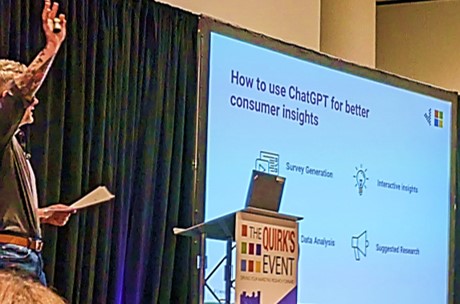
Real data, real time, real people (Nihal Advani, QualSights)
QualSights launched an easy-to-deploy smart sensor that looks like a coffee coaster and can track real life usage patterns for shampoo, dog food and more. A great example of a device tech changing market research and a huge leap over recall based data for when you really want to know how often someone brushes their teeth.
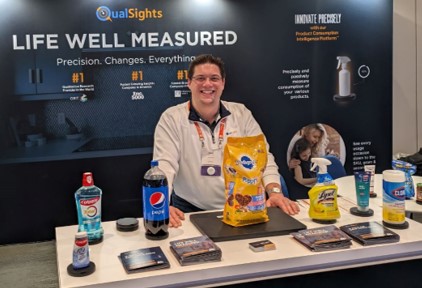
Narrative economics and contextual worldview (Susan Fader)
If I were hiring someone to deliver a master class in moderation, Susan would be a top choice.
Six veteran tips to better engage people in qual (and quant) that will help you not get replaced by ChatGPT.
My biggest takeaway: FRAME your research (qual and quant) with a narrative open ended question to set the participant’s mindstate. At Intuify, we use voice or video narrative, but even text narrative helps.

Narrative Economics needs more attention
Using ChatGPT for open-ended follow-up prompts (Kathy Cheng and Steve Male from Logit Group)
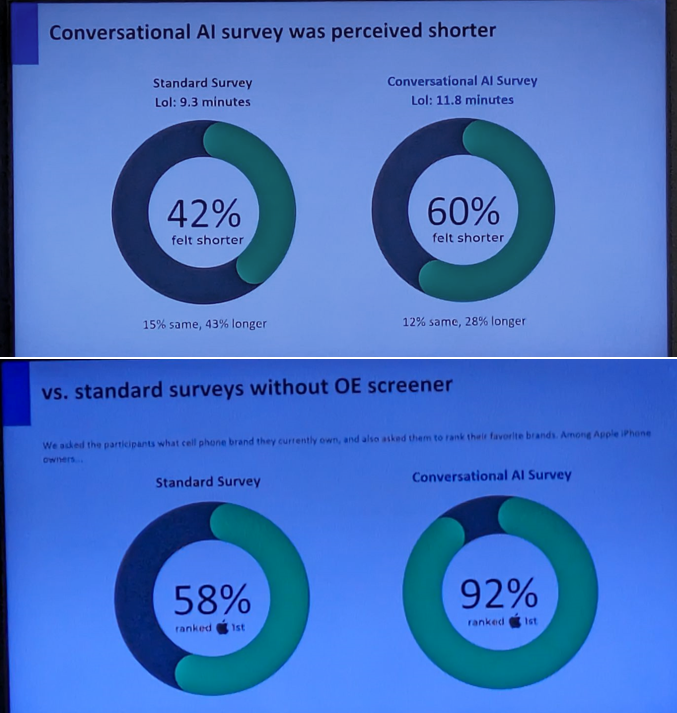
With an OE screener, data quality was the same though...
Simply asking a couple ChatGPT follow-up prompts to your open-ended questions gives you more/better data. I expected that, but it also improves the data quality for the rest of your survey too. Plus, even though it takes longer, people say it feels shorter.
The in-person difference: Mirroring? Affective Presence? Pheromones? (Clint Jenkin from Vanguard)
Zoom meetings are great, but we’re losing a lot of depth and nuance in our qualitative research (and job relationships) when we go digital. People have a presence and it affects conversations. And even simple things like Liminal Space (the transition time to and from a meeting) profoundly affect conversations. But, for some situations (and people) online is actually better. (Short stature? Nervous? Bad pheromones?)
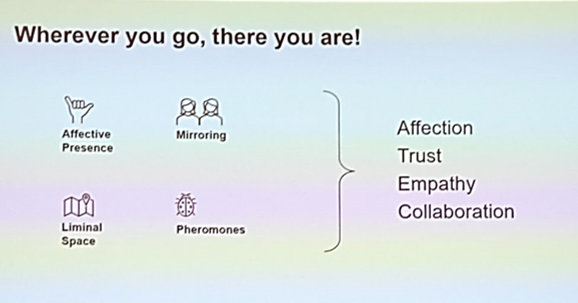
Hmmm, am I one of those people that does better over Zoom than in person?
Predicting out ten years? (Kim M., Chris Pagnucci, Molson Coors Beverage Company)
I was skeptical, but it’s a compelling case. Coors outlines the difference between mere insights and foresights. Foresights are an amalgamation of current trend data points that, when taken together, can help predict future trends or habits. An example of this is the “hard seltzer” craze, which data from ten years ago clearly points to (in hindsight, of course).
This synergized with another presentation from Beam Suntory on why they do research with a four-to-20 year lifespan because it takes that long to age good whiskey.
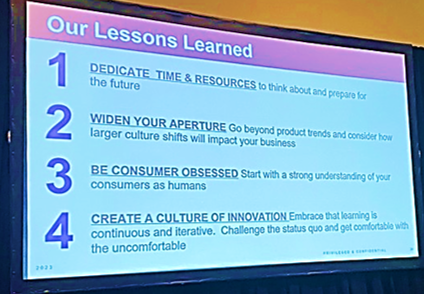
10 year prediction ain't easy...
Long term pipeline building (Mike Wojcikiewicz from PepsiCo, and Roos Hofland from Black Swan Data)
PepsiCo thinks big, and this is their take on using data to predict several years ahead to build out innovation pipelines. They showed how they pull together various data sources (including observational trend data) to systematically identify opportunities and fill their innovation pipeline. (I’d call it machine learning, not artificial intelligence, but that’s me on my analytical high horse.)
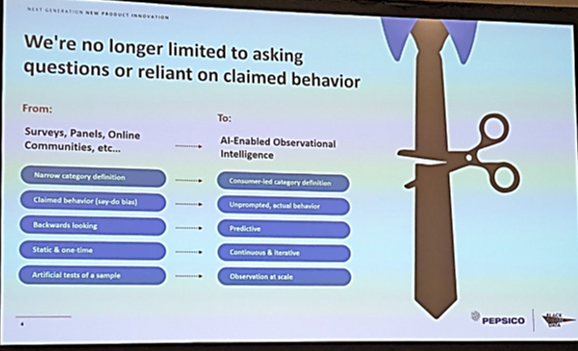
The data strategy sounds like everything, everywhere, all at once
Cultural Relevance and GenZ (Lauren Leahy and David Pangilinan at Paramount Pictures)
Every generation has its tribal mentality. 75% of GenZ expect brands to work to maintain cultural relevance, and a third consider themselves fans of specific brands. This reminds me of some great research at an IA conference that shows that GenZ are also far more likely to buy brands that are endorsed by TikTok influencers vs. ones that are advertised on TV.
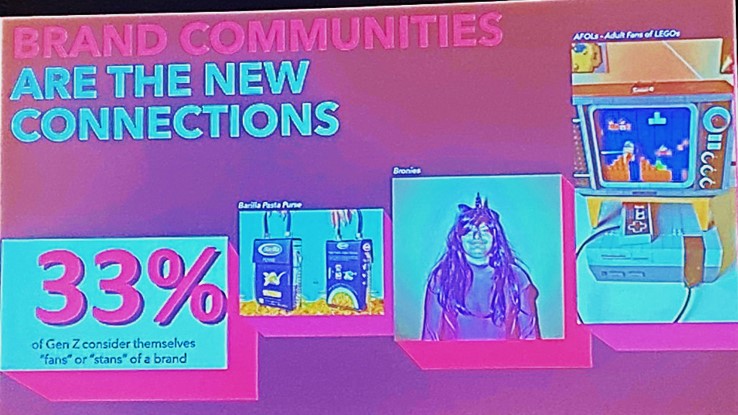 My kids are GenZ... *sigh*
My kids are GenZ... *sigh*
So that was Quirks for us – good stuff!
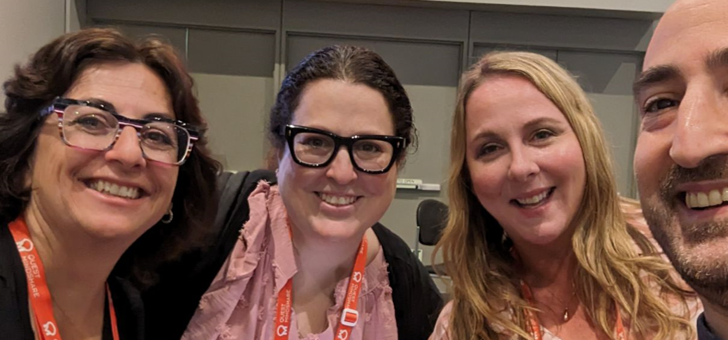
Hello to my Affinnova gang! Yes, I know - reunion next summer!
Also, shout out to my old Affinnova, Inc. friends. Please forgive my terrible selfie-skills.
